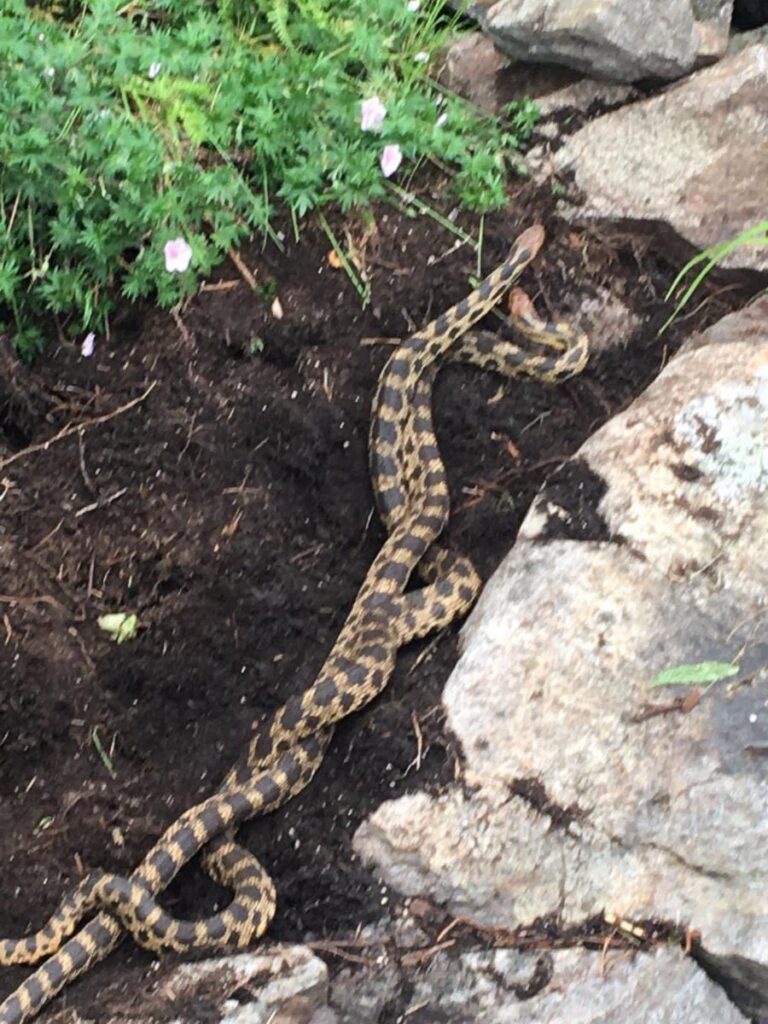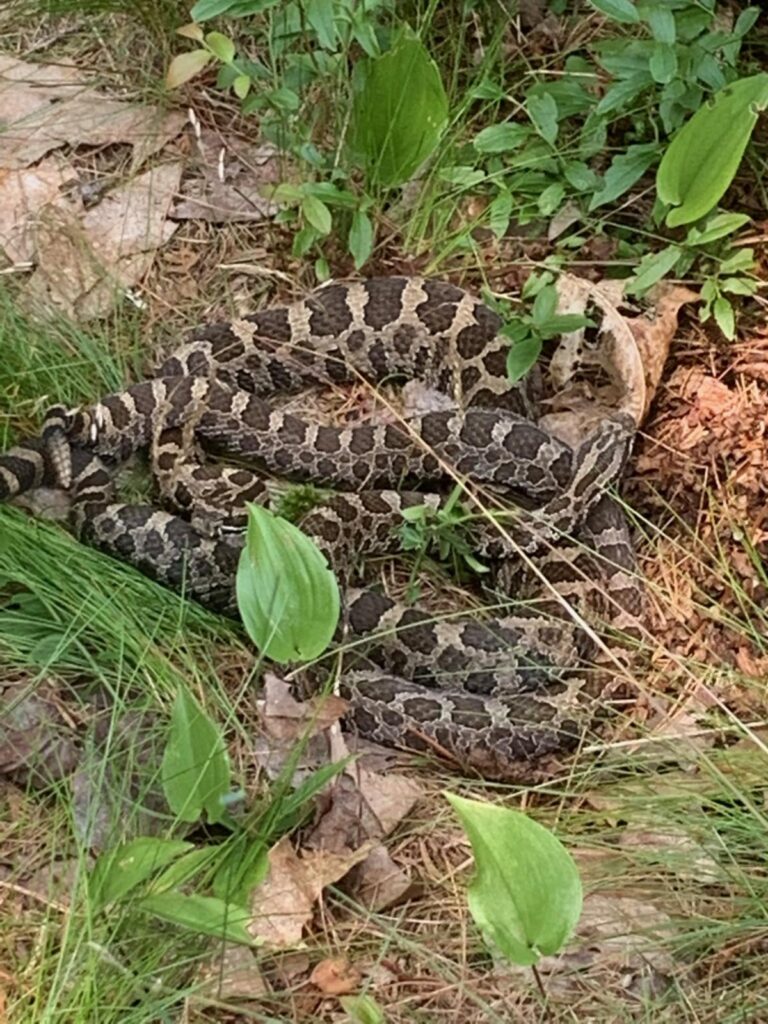by Trudy Irvine, Member of Education Committee
Photos by Chrystal Barrett (1st one) and Trudy Irvine (2nd)
“Gonna find my baby,gonna hold her tight,gonna grab some afternoon delight -my motto’s always been when it’s right, it’s right -why wait until the middle of a cold dark night?” Listen to the song!
The lyrics of this 70’s gem could be the mating song of any of the snakes found on the warm rocks of Georgian Bay. It seems that the reptiles’ need to thermoregulate necessitates some rather public displays of affection. Reports of not-so-secret afternoon trysts lasting for hours have come from Wawonaissa and Sagadawong islands, and I am sure there are more accounts out there.
Reproduction of the Eastern Massasauga rattlesnake is especially interesting. Females do not reach sexual maturity until they are about 5 years old, and then they only breed once every two years- once every three if resources are scarce. Things begin when females with mature eggs in their oviducts release a pheromone trail, and the chase is on. Males track the trail to locate a fertile female and follow her around for a few days, frequently touching and rubbing against her. Fertilization is achieved with the males using the paired hemipenes at the base of their tails (usually kept tucked away in their bodies) to inseminate the females. Males are immediately on their way after mating, while the female will soon seek out a gestation site that will provide good cover and a range of temperatures to help her incubate her eggs.
Females will return to the same gestation site every couple of years with each reproductive cycle. Unlike other egg-laying snakes in Ontario, rattlesnakes are ovoviviparous, meaning that the female retains the fertilized, shell-less eggs in her body until she gives birth to live young. Females feed very little if at all and live primarily off their fat reserves throughout gestation. Females that mate in the late summer are capable of storing sperm until they ovulate the following spring. Litter sizes range between 3 to 20 young, with 12 being the average, and the newborns are about 20cm in length. They are born equipped with fangs and venom, and their own baby rattle- a single yellowish “button” at the end of their tail. Mortality of the youngsters is high, as they are vulnerable to a variety of avian and mammalian predators, and subject to environmental stresses.
It’s hard to be a snake. It’s hurtful to be called a viper and no one wants to be known as suffocating. If you should encounter two snakes enjoying each other’s company, give them a wide berth and leave them to enjoy their skyrockets in flight.

